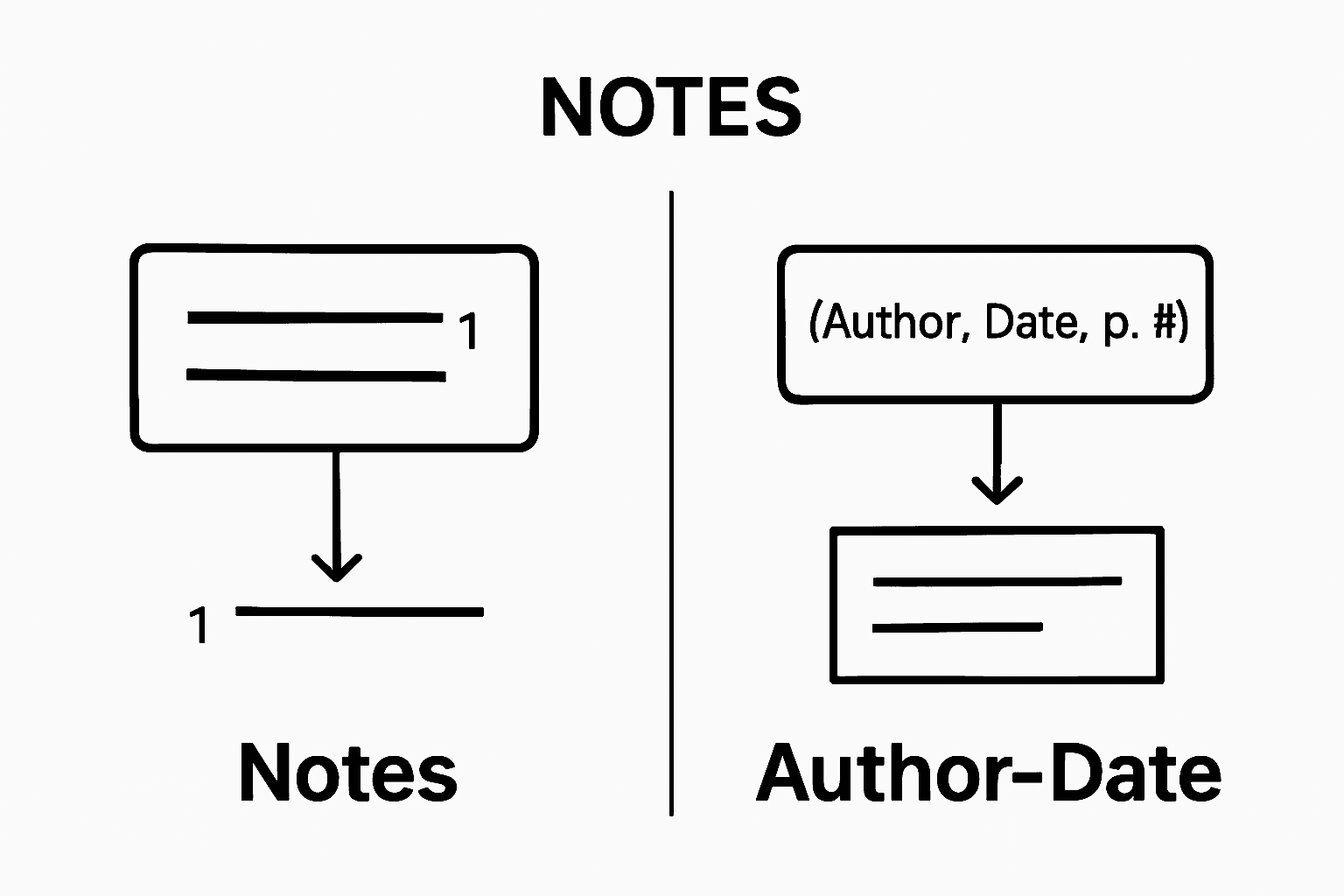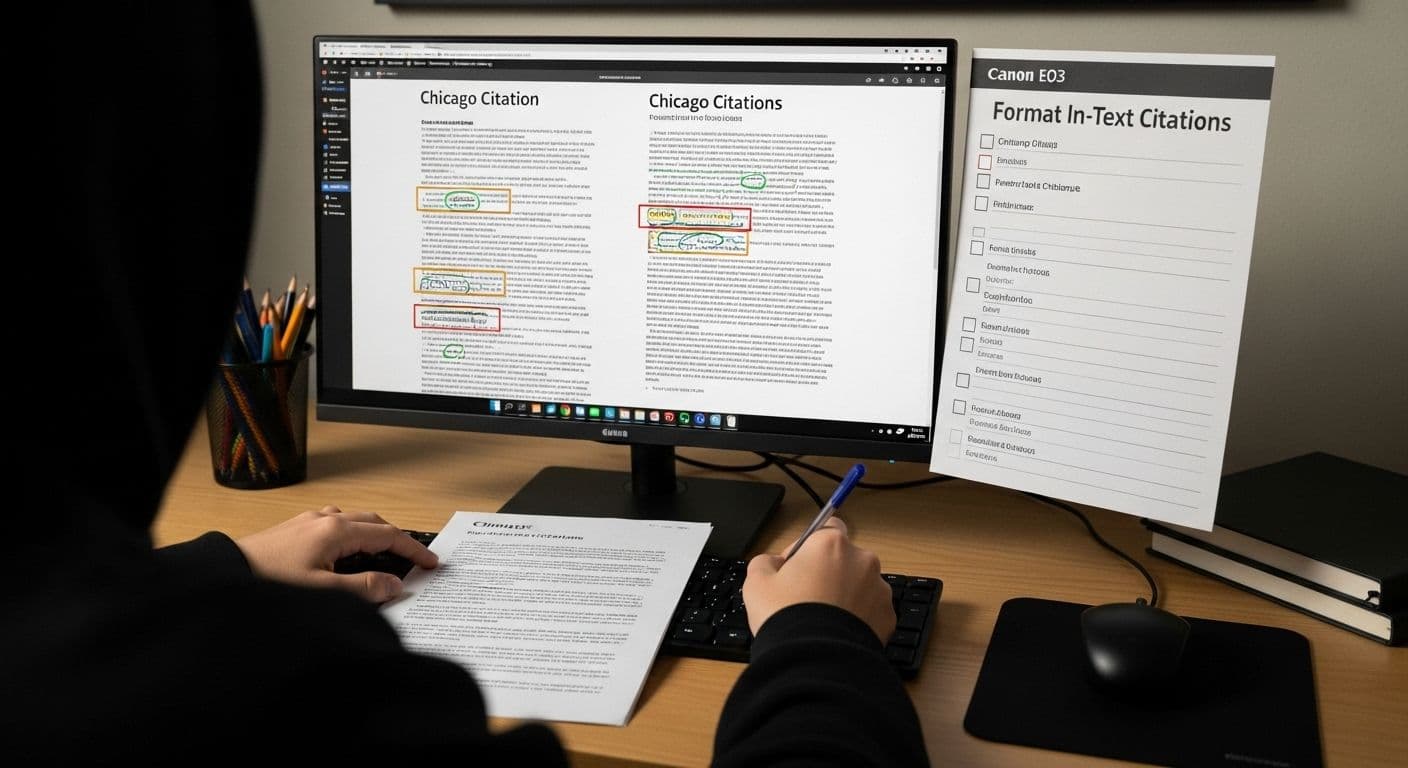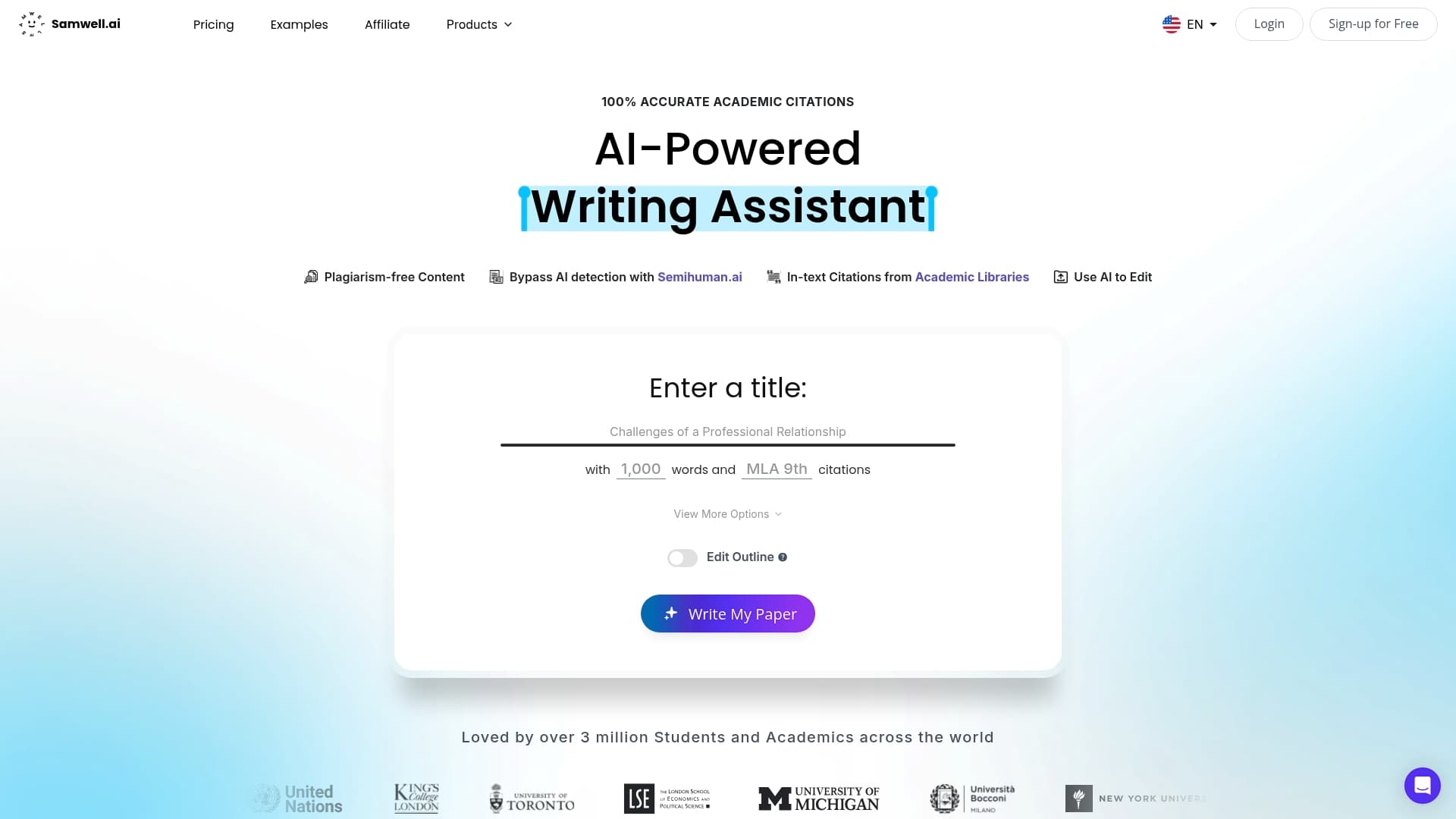Blog
Learning Materials
Master Citing Chicago Style in Text Today
Updated: September 3, 2025

Citing sources in Chicago style can look intimidating at first glance, with its detailed rules and multiple citation systems. Yet, missing one small step can turn a solid research paper into a credibility risk. Studies show even a single citation mistake can trigger academic integrity concerns during review. But the real surprise is that getting citations right does not have to be complicated or stressful. With the right approach, anyone can assemble accurate, professional citations that impress both professors and publishers—no stress required.
Table of Contents
- Step 1: Gather Your Sources For Citation
- Step 2: Identify Citation Format Requirements
- Step 3: Format In-Text Citations Correctly
- Step 4: Compile A Bibliography Reference List
- Step 5: Review And Verify Citation Accuracy
Quick Summary
| Key Point | Explanation |
|---|---|
| 1. Compile Complete Source Information | Gather all essential details about your research sources to ensure accurate citations. |
| 2. Understand Citation Format Requirements | Identify if your discipline requires Notes and Bibliography or Author-Date citation styles for rigorous documentation. |
| 3. Format In-Text Citations Correctly | Ensure accurate in-text citations by following your chosen citation system to enhance your academic writing. |
| 4. Create a Comprehensive Bibliography | Organize a well-formatted bibliography that lists all sources alphabetically and follows specific Chicago style rules. |
| 5. Review for Citation Accuracy | Conduct a thorough verification of all citations to ensure consistency and prevent academic misconduct. |
Step 1: Gather Your Sources for Citation
Mastering Chicago style citations begins with strategic source gathering. Compiling complete and accurate source information is foundational to creating precise citations. Before diving into the technical aspects of formatting, researchers must meticulously collect all necessary details about their sources.
Start by creating a comprehensive collection system for your research materials. Academics recommend developing a dedicated digital or physical tracking method where you record critical bibliographic information immediately upon discovering a source. This approach prevents the frustrating scenario of locating a perfect quote or reference but being unable to recall its precise origin.
For each source you plan to cite, capture essential details including:
- Full author name (first and last)
- Complete title of the work
- Publication date
- Page numbers referenced
- Publication or website details
- URL (for digital sources)
- Access date for online materials
Digital tools can significantly streamline this process. Reference management software like Zotero or EndNote can automatically capture source information and help organize research materials. These platforms integrate seamlessly with word processing software, allowing researchers to generate citations quickly and accurately.
Learn more about precise citation techniques for academic writing. Developing a systematic approach to source gathering transforms what could be a chaotic research process into a structured, efficient workflow. By investing time upfront in meticulous source documentation, you create a solid foundation for crafting impeccable Chicago style citations that demonstrate academic rigor and intellectual integrity.
Verify your source gathering is complete by ensuring you have all necessary bibliographic information for each reference. A successful compilation means you can confidently move forward, knowing you have the raw materials needed to construct accurate citations in the next steps of your research process.
Step 2: Identify Citation Format Requirements
Understanding the nuanced citation requirements in Chicago style is critical for academic writing success. Chicago Manual of Style offers two primary citation systems that researchers must carefully distinguish: Notes and Bibliography, and Author-Date formats. Selecting the appropriate system depends on your specific academic discipline and publication requirements.
The Notes and Bibliography system, predominantly used in humanities disciplines like history, literature, and arts, requires writers to create footnotes or endnotes with a corresponding bibliography. This approach allows for more extensive commentary and provides readers with comprehensive source details. In contrast, the Author-Date system, frequently employed in scientific and social science fields, integrates parenthetical references directly into the text with a corresponding reference list.
To determine your citation format, consider these key factors:
- Academic discipline of your research
- Publication or institutional guidelines
- Specific requirements of your target journal or academic department
- Nature of sources being referenced
Explore detailed citation strategies that can help clarify your specific citation needs. Consulting your institution's style guide or discussing requirements with your academic advisor can provide definitive guidance.
To help you decide between the two primary Chicago citation systems, the table below compares their main features and typical uses.
| Citation System | Main Features | Common Disciplines |
|---|---|---|
| Notes and Bibliography | Uses footnotes or endnotes with bibliography | Humanities (history, literature, arts) |
| Author-Date | Parenthetical in-text citations, reference list | Sciences, social sciences |
Professional researchers recommend creating a quick reference sheet outlining the specific requirements for your chosen citation system. This preparatory step ensures consistency and accuracy throughout your document. By meticulously identifying citation format requirements upfront, you establish a solid foundation for crafting a professionally formatted academic manuscript that meets the rigorous standards of Chicago style documentation.

Verify your citation format selection by cross-referencing your chosen system against your institutional guidelines and confirming you understand the specific formatting rules for in-text citations, footnotes, and bibliography entries.
Step 3: Format In-Text Citations Correctly
Precise in-text citation formatting separates professional academic writing from amateur attempts. Chicago style demands meticulous attention to detail when referencing sources within your document. Depending on whether you're using the Notes and Bibliography or Author-Date system, your approach to in-text citations will vary significantly.
For the Notes and Bibliography system, you'll insert superscript numbers within your text that correspond to detailed footnotes or endnotes. These numbered citations allow for more expansive explanatory commentary and provide readers with comprehensive source information. When a source is first referenced, include full bibliographic details in the corresponding footnote. Subsequent references to the same source can use shortened citation formats that still provide clear attribution.
In the Author-Date system, your citations will look quite different. Parenthetical references become your primary method of source acknowledgment. These in-text citations typically include the author's last name, publication year, and specific page numbers when directly quoting or referencing a particular section. Integrate these references seamlessly into your text, ensuring they do not disrupt the natural flow of your writing.
Consider these critical guidelines for accurate citation:
- Always place punctuation after the parenthetical citation
- Use "et al." for sources with multiple authors
- Include page numbers only when directly quoting or referencing specific passages
- Match every in-text citation precisely with your bibliography or reference list
Discover advanced citation techniques that can elevate your academic writing. Professional researchers recommend creating a style sheet or quick reference guide specific to your chosen citation system. This personal reference ensures consistency throughout your document and helps prevent common formatting errors.
Verify your in-text citations by cross-checking each reference against your source materials. Confirm that every parenthetical or footnote citation corresponds exactly with an entry in your bibliography, includes all required information, and follows the precise formatting guidelines of Chicago style. A meticulous review at this stage can save significant time during final document preparation and prevent potential academic integrity challenges.

Step 4: Compile a Bibliography Reference List
Crafting a comprehensive bibliography is the final critical step in mastering Chicago style citations. This reference list serves as a roadmap for readers, providing complete details about every source referenced in your academic work. The bibliography transforms your in-text citations from brief references into full, traceable academic documentation.
For the Notes and Bibliography system, your bibliography will appear on a separate page at the end of your document. Each entry requires meticulous formatting, with sources arranged alphabetically by the author's last name. Precise punctuation, capitalization, and spacing are non-negotiable requirements. Pay special attention to the specific formatting rules for different source types such as books, journal articles, websites, and archival materials.
In the Author-Date system, your reference list follows similar organizational principles but with slight variations in formatting. Entries must align perfectly with the parenthetical citations used throughout your document. This means every source cited in-text must have a corresponding full reference, and conversely, every reference list entry should be potentially citable within your text.
Consider these essential bibliography compilation strategies:
- Maintain consistent formatting across all source types
- Double-check each entry for accuracy of publication information
- Verify that capitalization follows Chicago style guidelines
- Ensure proper indentation and spacing
- Cross-reference your in-text citations with bibliography entries
Explore advanced reference list techniques to refine your academic documentation skills. Digital reference management tools like Zotero or EndNote can significantly streamline this process, automatically generating correctly formatted bibliographic entries and reducing the potential for human error.
Verify your bibliography's accuracy by conducting a comprehensive review. Check that each entry includes all required elements: author names, publication titles, publication dates, and location information. Confirm that the formatting is consistent, with no stray punctuation or inconsistent capitalization. A meticulously compiled bibliography demonstrates scholarly rigor and provides future researchers with a reliable roadmap to your source materials.
Step 5: Review and Verify Citation Accuracy
Academic credibility hinges on the precision of your citation documentation. The final step of mastering Chicago style citations involves a comprehensive and methodical review process that goes beyond simple proofreading. This critical stage transforms your research from a collection of sources into a professionally documented academic work.
Begin by conducting a systematic cross-reference of your in-text citations against your original source materials. Verify that every quotation, paraphrase, and direct reference accurately reflects the original text and includes the correct page numbers. Pay particular attention to direct quotations, ensuring that the exact wording matches the source and the citation precisely indicates the original location.
Your verification process should create a seamless connection between your in-text citations, footnotes or endnotes, and the final bibliography. Each source referenced in your document must have a corresponding full bibliographic entry, with no discrepancies in author names, publication dates, or other critical details. This meticulous approach prevents potential accusations of academic misconduct and demonstrates scholarly rigor.
Use this checklist to ensure you have verified every key area required for accurate Chicago style citation documentation.
| Verification Step | Key Action | Completion Status |
|---|---|---|
| Cross-check in-text citations | Match each citation to source and bibliography entry | |
| Confirm page numbers | Verify correct page numbers for all quotations/references | |
| Validate author names and publication info | Ensure accuracy across all citation components | |
| Check formatting consistency | Verify punctuation, spacing, and style conformity | |
| Test digital source accessibility | Ensure URLs and online details are current |
Consider these essential verification strategies:
- Confirm every in-text citation matches a corresponding bibliography entry
- Check that page numbers are accurately reported
- Verify punctuation and formatting consistency
- Cross-reference digital sources to ensure current accessibility
- Validate the accuracy of author names and publication details
Explore advanced citation verification techniques that professional researchers use to ensure documentation precision. Digital tools like reference management software can help automate parts of this process, but manual review remains crucial for catching nuanced errors that automated systems might miss.
Verify your citation accuracy by creating a systematic checklist. Confirm that your citations follow Chicago style guidelines exactly, with consistent formatting, correct punctuation, and precise source information. A successful review means your academic document not only communicates research effectively but also meets the highest standards of scholarly documentation.
Transform Your Citation Accuracy with Samwell.ai
Are you frustrated by the constant struggle to keep track of sources and perfect your Chicago style citations? The pain points are real: missing bibliographic details, uncertainty about when to use Notes and Bibliography or Author-Date, manual formatting errors, and the exhausting cycle of cross-referencing every reference in your research papers. If you want to master every step outlined in "Master Citing Chicago Style in Text Today"—from gathering correct sources to reviewing and verifying every citation—there is a better, faster way to work.

Samwell.ai empowers you to overcome citation challenges with cutting-edge tools designed for academic excellence. Instantly generate accurate citations, keep your research organized, and guarantee compliance with every style guideline—no more formatting stress or missed details. Join over a million students and researchers who trust Samwell.ai to help organize sources and automate precise in-text citation techniques in real time. Ready for zero-error citations and a streamlined research process? Visit Samwell.ai now and experience stress-free academic writing today.
Frequently Asked Questions
What is Chicago style citation?
Chicago style citation is a method of acknowledging sources used in academic writing, detailed in the Chicago Manual of Style. It includes two systems: Notes and Bibliography, commonly used in humanities, and Author-Date, used in sciences and social sciences.
How do I format in-text citations in Chicago style?
In Chicago style, in-text citations differ based on the system used. The Notes and Bibliography system uses superscript numbers for footnotes or endnotes, while the Author-Date system incorporates parenthetical citations including the author's last name, publication year, and page numbers.
What information do I need to collect for a Chicago style bibliography?
For a Chicago style bibliography, you need to gather the author's full name, title of the work, publication date, page numbers referenced, and publication details, including the URL for digital sources and access date for online materials.
How can I ensure my citations are accurate?
To ensure citation accuracy, conduct a thorough review by cross-referencing in-text citations with the original sources and your bibliography. Check for correct author names, publication dates, and ensure consistent formatting according to Chicago style guidelines.
Generate essays with Samwell.ai
Whether you’re a publisher, professor, journalist, or student, let us tailor a plan just for you.Most Read Articles

Your Guide to Help Writing a Essay Successfully
Expert tips for help writing a essay - from crafting a thesis to structuring your essay effectively.

How to Write Critical Thinking Essay: Expert Tips
Expert tips for writing a critical thinking essay. Learn how to structure, choose topics, and use evidence effectively.'

How to Write a Good Hook: A Step-by-Step Guide
Master the art of crafting a good hook with our guide. Create compelling openers for a memorable first impression.
